City Cortex celebrates cork’s versatility with public installations in Lisbon
City Cortex, an urban project in Lisbon developed by Amorim, celebrates cork as a sustainable material with installations by Gabriel Calatrava, Leong Leong, Yves Behar and more
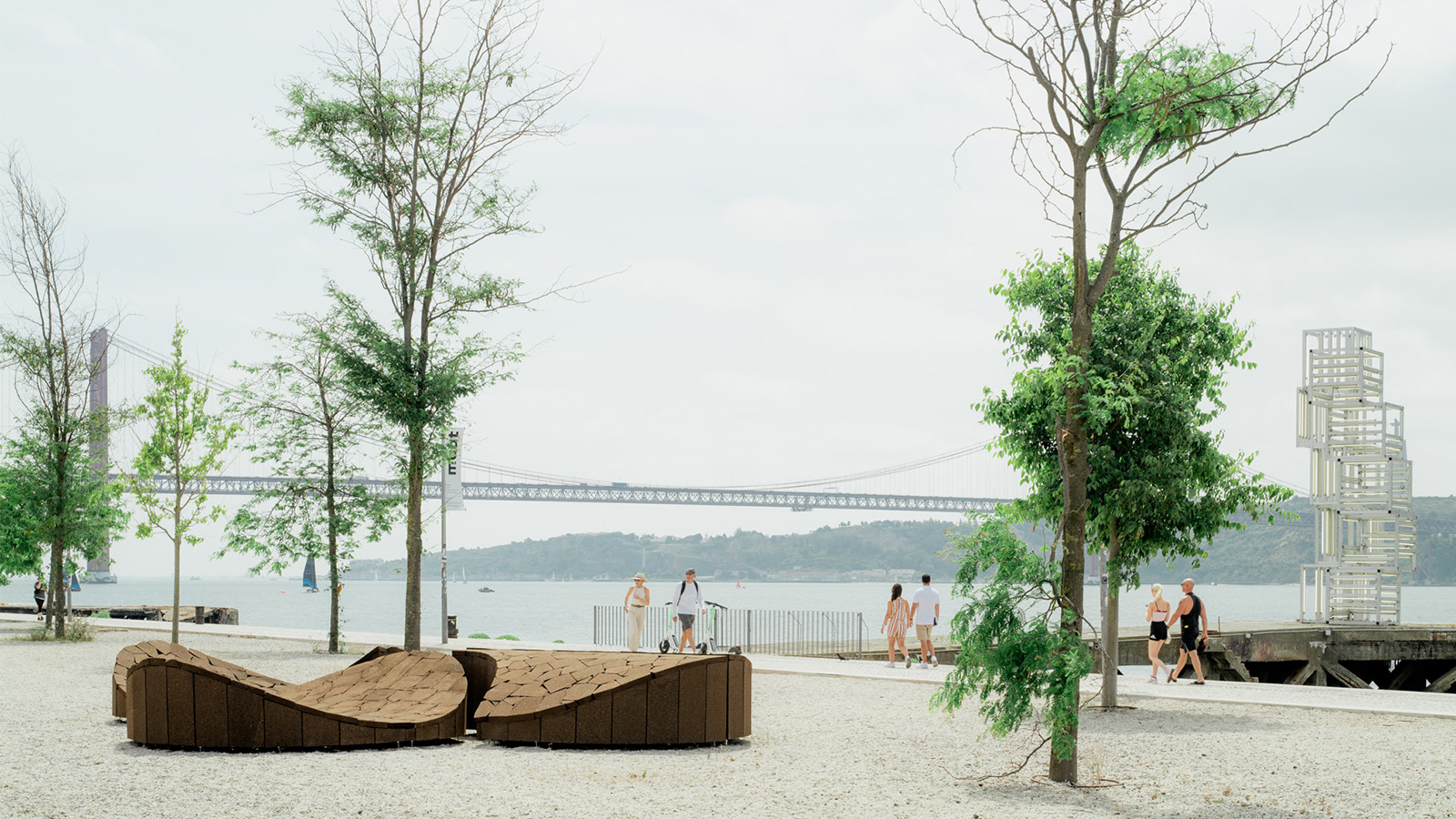
City Cortex, a research programme supported by world-leading cork producer Corticeira Amorim and unveiled this month, uses Lisbon as a testbed to explore new possibilities for the material's use in urban design. The project challenged internationally recognised architects and designers Eduardo Souto de Moura, Diller Scofidio + Renfro, Gabriel Calatrava, Leong Leong, Sagmeister & Walsh, and Yves Behar to present experimentations with cork, creating a series of public installations. The concept was curated by Guta Moura Guedes, a mainstay in Portugal’s art and culture scene.

Leong Leong, ‘Lily Pad’
City Cortex opens to the public
'Cork is a very sweet and emotional material [...] We are surrounded by concrete, by iron, and now we have these small gestures made of cork to teach us that nature is part of our cities, and that sweetness and wellbeing are as well,' explains Moura Guedes of City Cortex, which was inaugurated last weekend in Lisbon.
Originally slated for an opening in New York City before the pandemic, City Cortex moved its launch closer to its Portuguese cork roots, with works now installed on sites across Belém and Trafaria in Lisbon until November 2024.
Projects include Diller Scofidio + Renfro’s 'Second Skin', where cork-wrapped tree trunks transform a small public garden near the Biblioteca Municipal de Belém into an open-air reading room; and Behar’s 'Port_All' totemic cork structure, symbolically mirroring nearby Belém Tower, while also leaning into cork’s softness and highly absorbent properties to offer a sensory respite from the city's typical material palette.
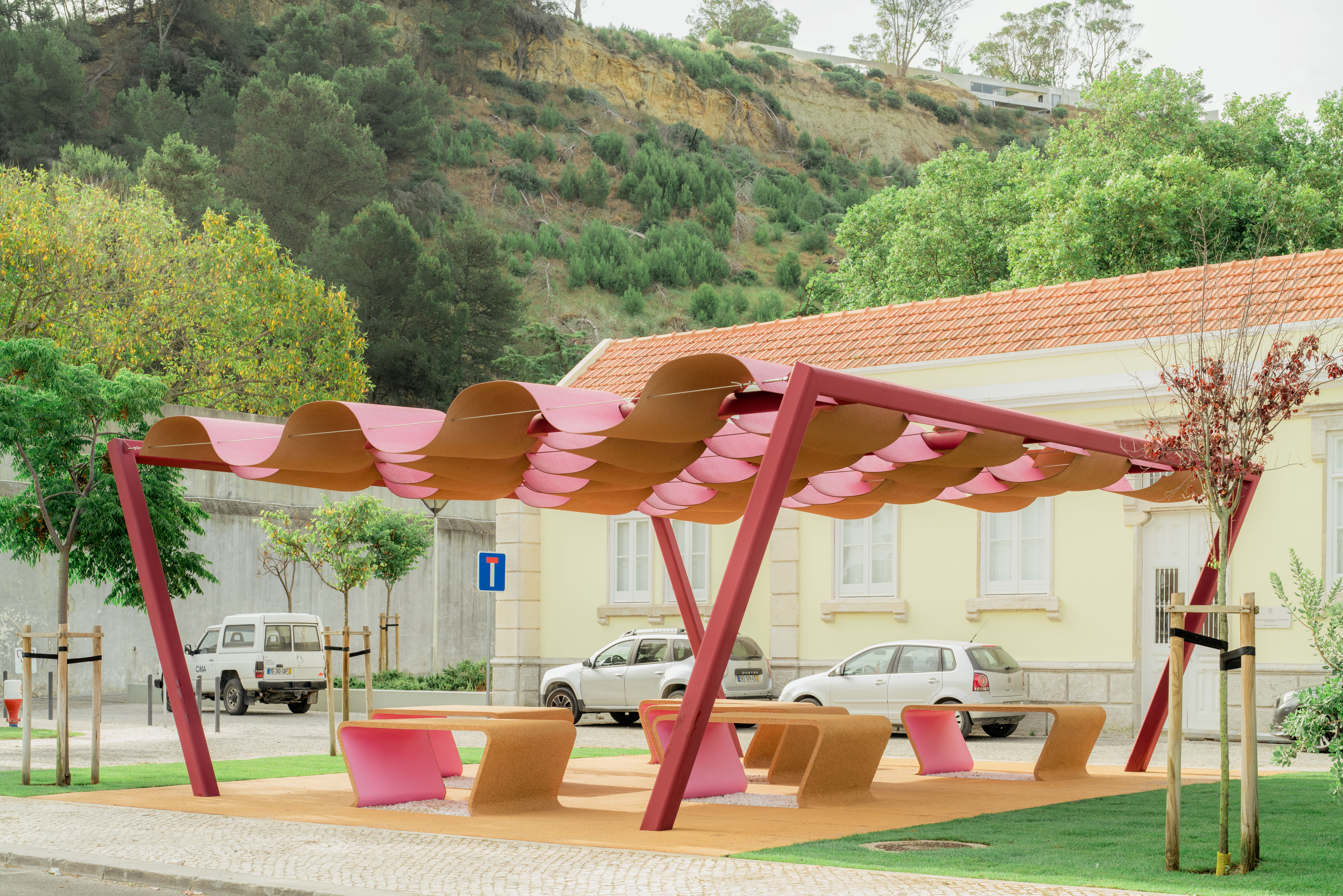
Gabriel Calatrava, ‘Onda’
Further projects include Souto de Moura’s 'Conversadeira II', a love-seat-inspired structure intentionally positioned at the intersection of two buildings constructed more than 100 years apart. It invites contemplation on the past and future of Lisbon. Then, there's Sagmeister & Walsh’s series of interventions, tackling, for example, sound pollution with cork in a frequently used city underpass, while encouraging a longer-term approach to conversations on environmental changes.
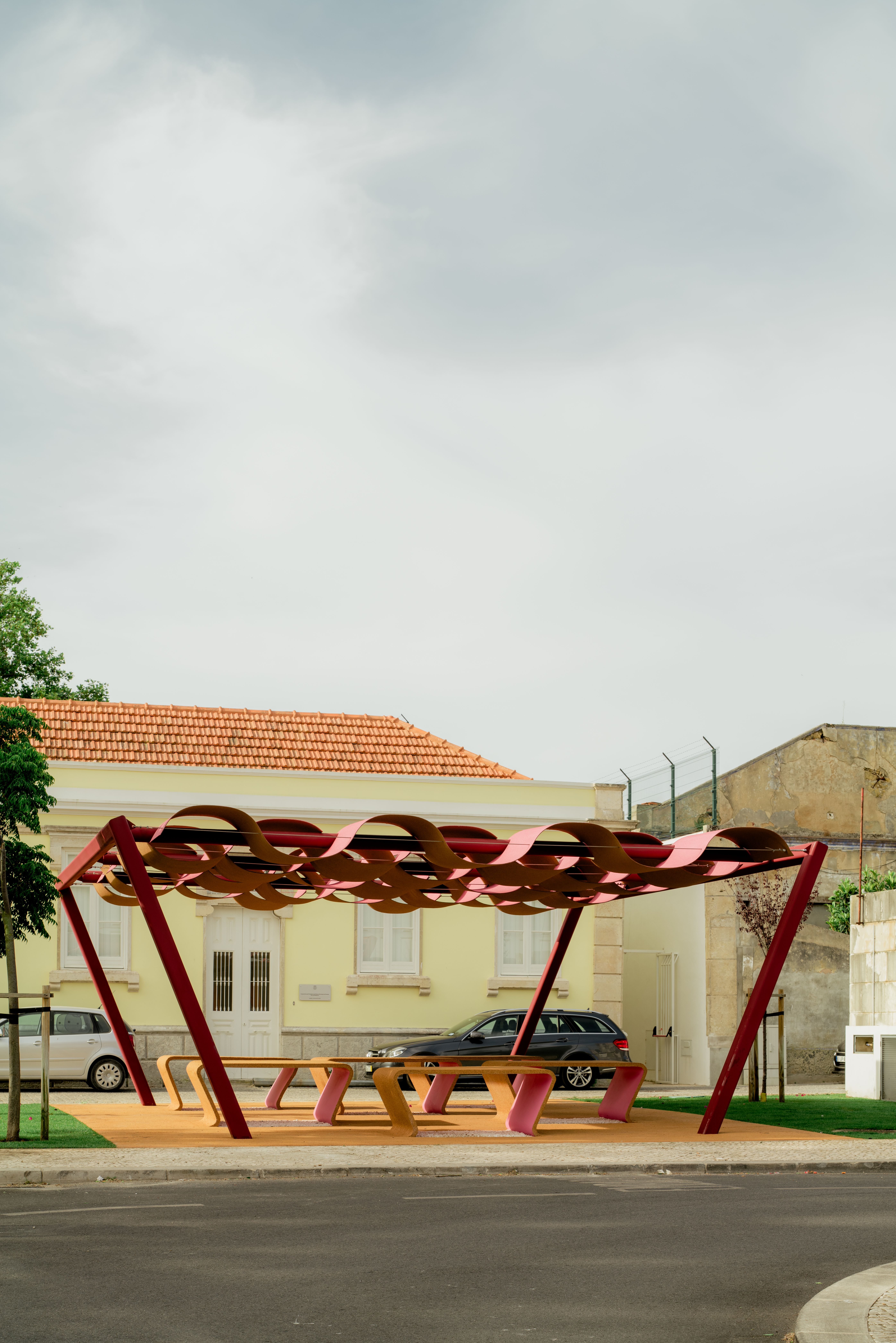
Gabriel Calatrava, ‘Onda’
‘Onda’ by Gabriel Calatrava’s Collaborative Architecture Laboratory (CAL)
'How can we protect or expand on the public realm, using spaces that are neglected?' asks Calatrava, discussing the motivation for activating disused spaces in cities like New York and Lisbon. Recognising his project's site in Trafaria, across the river Tagus, as home to many newly migrated communities, Calatrava sought to root his activation around creating a space for gathering.
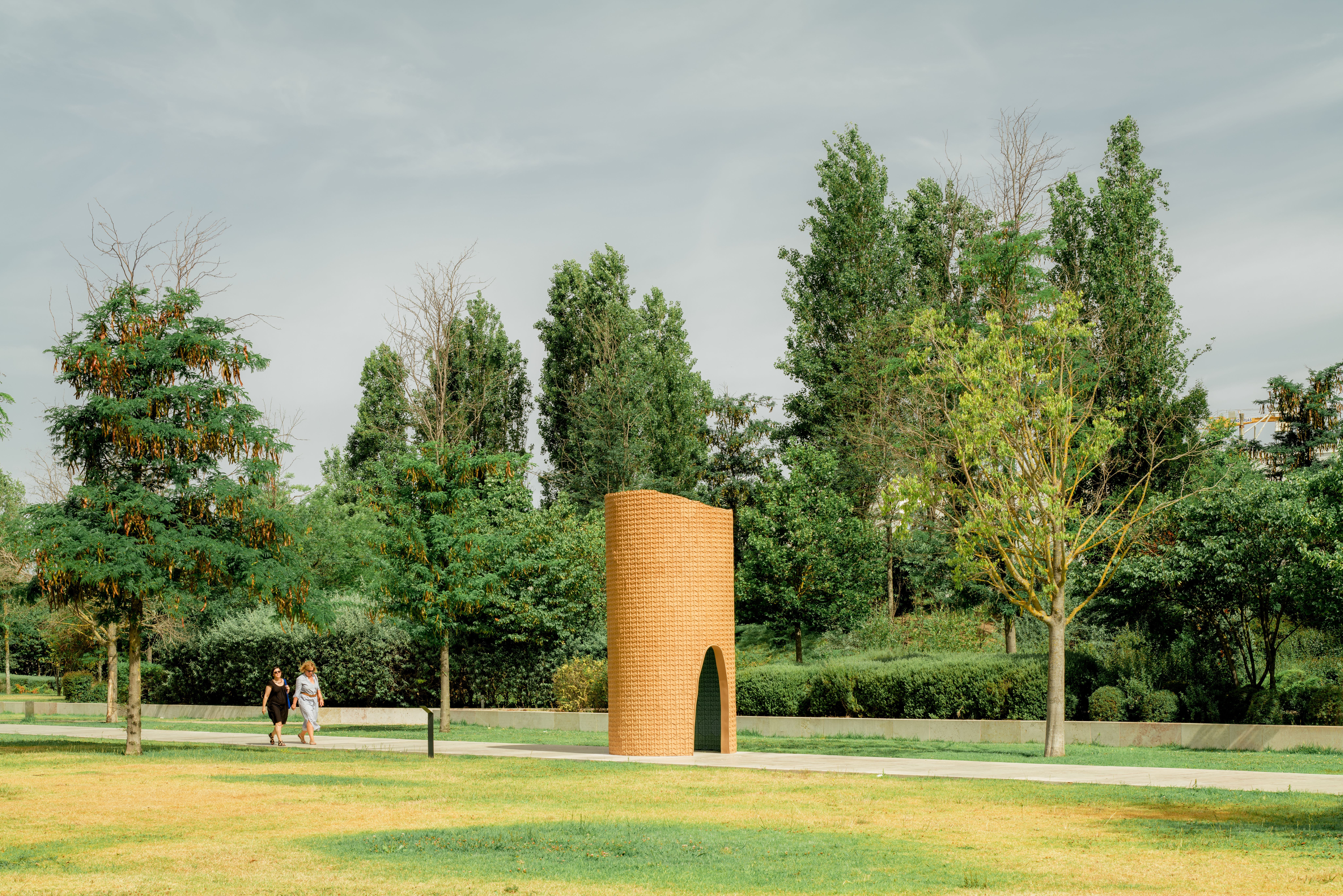
Yves Behar, ‘Port All’
Now, straight off the docks, people are greeted by Gabriel Calatrava’s Collaborative Architecture Laboratory (CAL)’s permanent cork intervention, 'Onda'. A wide undulating canopy taps into cork’s infrared-absorbing properties to provide much-needed shade and tables for gathering below. Collaborating closely with Trafaria municipality's authorities and EDA – Ensaios e Diálogos Associação, a local civic group – local communities are actively encouraged to bring disused pieces of furniture, such as chairs, to the site, to be wrapped and protected in a layer of cork, promoting notions of reusability and recycling (alongside the wider benefits of cork furniture).
Wallpaper* Newsletter
Receive our daily digest of inspiration, escapism and design stories from around the world direct to your inbox.
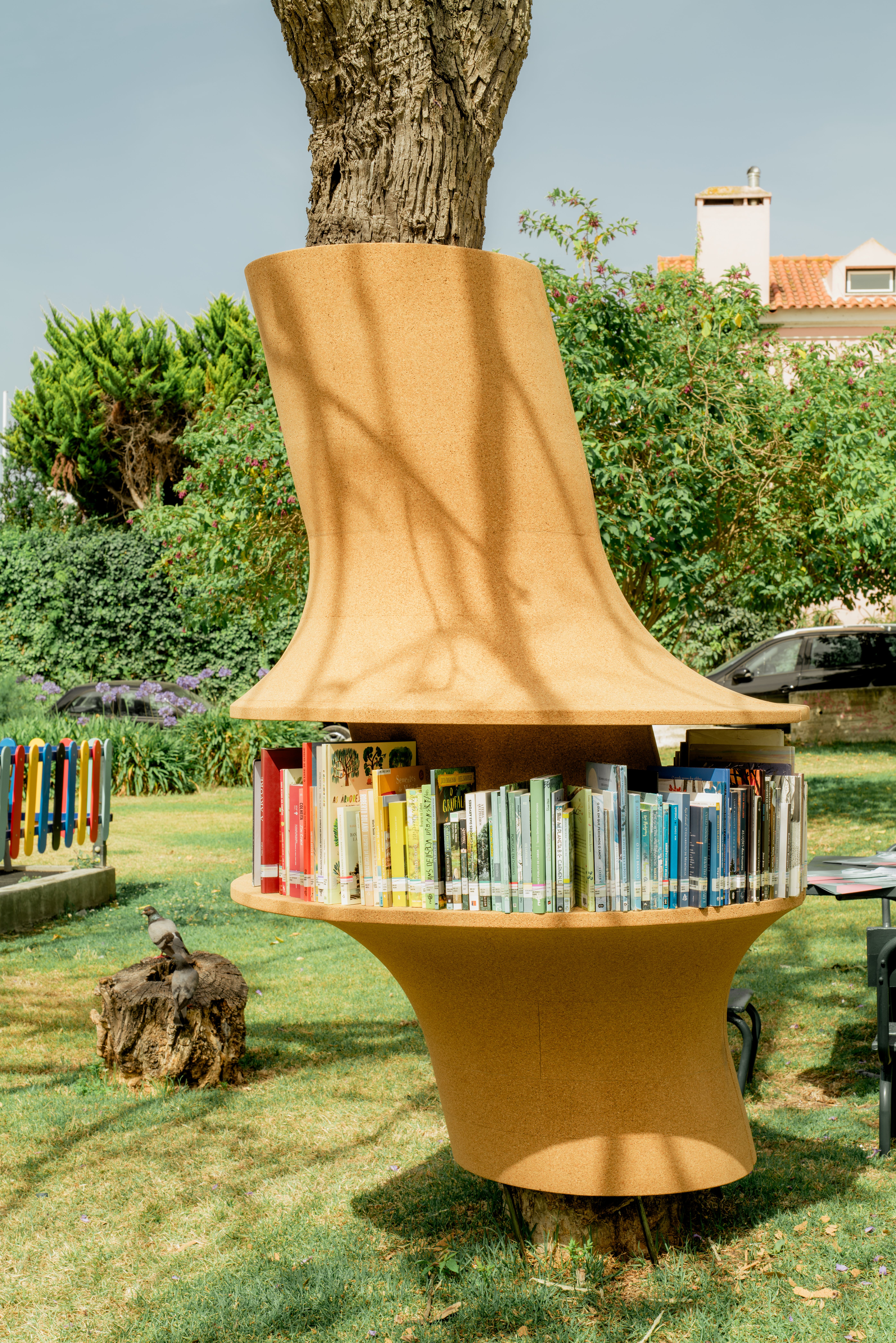
Diller Scofidio + Renfro, ‘Second Skin’
‘Lily Pad’ by Leong Leong
Back by the waterfront in Belém, sibling duo Dominic Leong and Chris Leong of internationally recognised Leong Leong, were inspired by the concept of ‘the city as a playground’.
'One of my first relationships with the city was through skateboarding […] Encountering different elements of architecture, furniture, playgrounds…' explains Dominic of his experiences of navigating cityscapes, and facing the barriers of 'defensible space'.
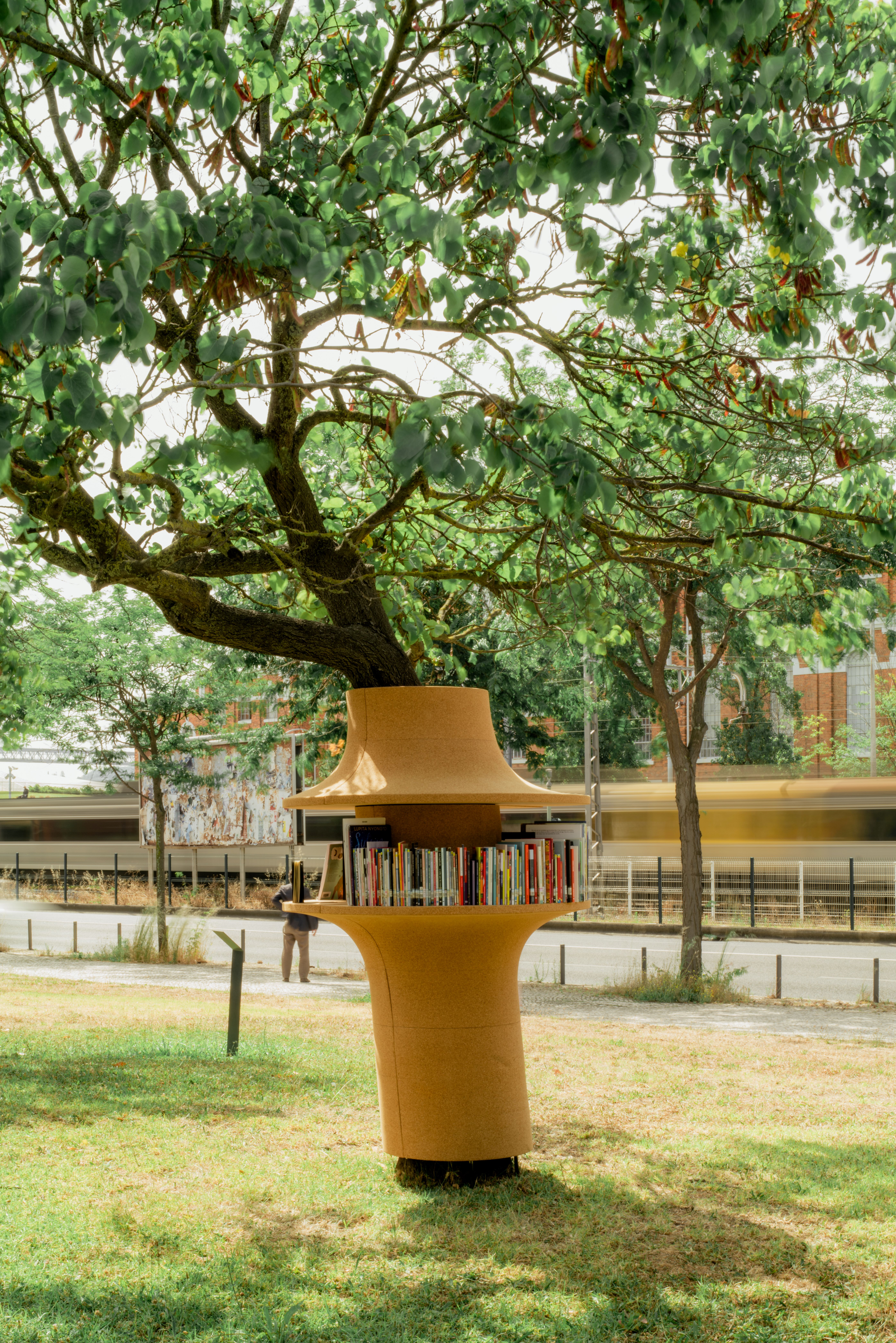
Diller Scofidio + Renfro, ‘Second Skin’
Prompted by the questions, 'What is the relationship between bodies and the surrounding city?' and 'How do they find comfort or rest?', Leong Leong designed 'Lily Pad'. For their concept, they transformed cork through a process of high pressure and temperature manipulation to yield a distinctive, dark, strongly scented playscape that 'creates a tactility or warmth, as if you were touching the ground'.
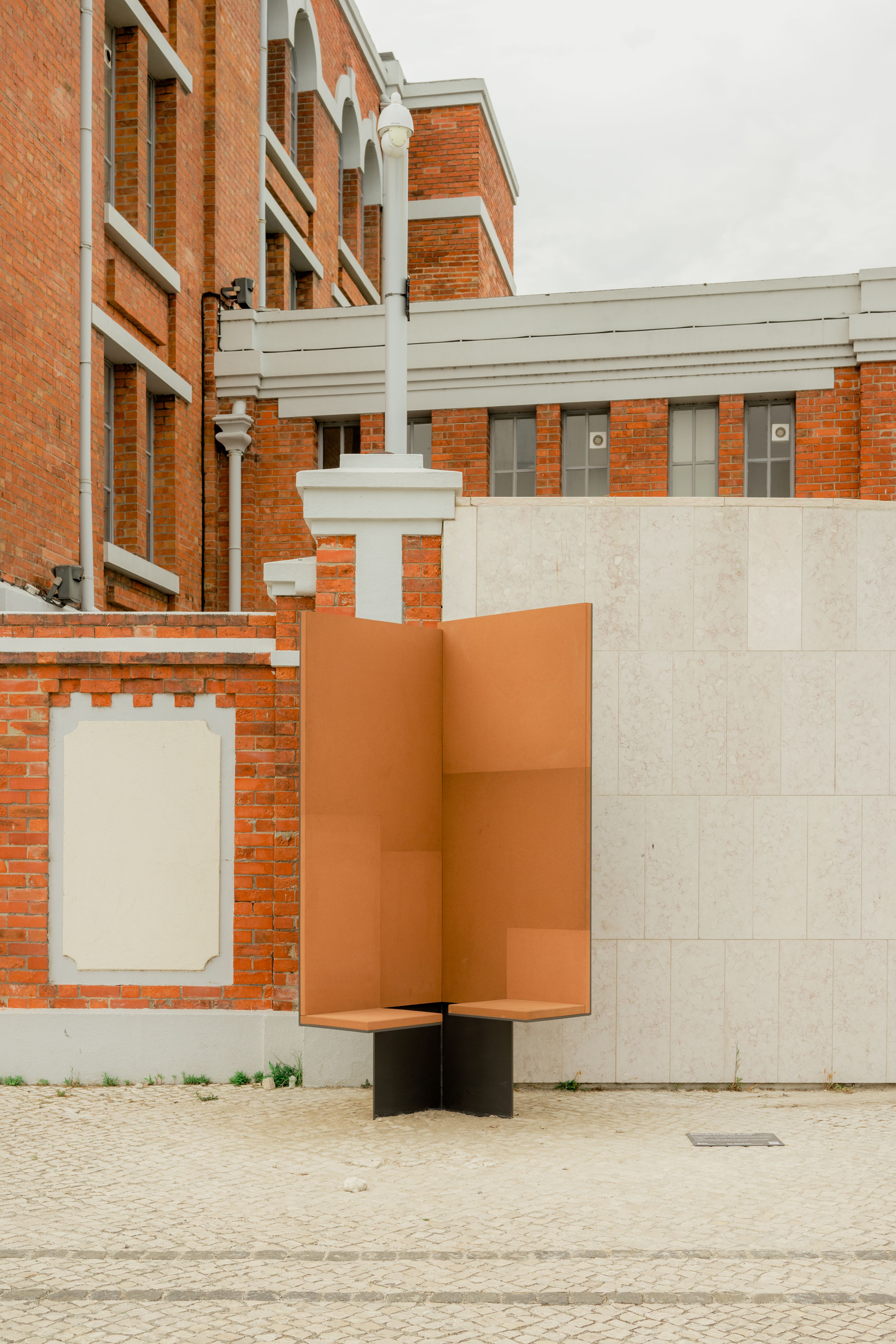
Eduardo Souto de Moura, ‘Conversadeira II’
'In a lot of ways the project was about creating an indefensible play state [...] looking at possibilities in the space for different bodies to find comfort.'
Though each project offers distinct interpretations of cork’s potential in urban design, a palpable unifying thread is a deep appreciation of cork’s resilience, versatility and material intelligence, as well as the importance of community, engagement and participation, and an exploration of the politics of public space.
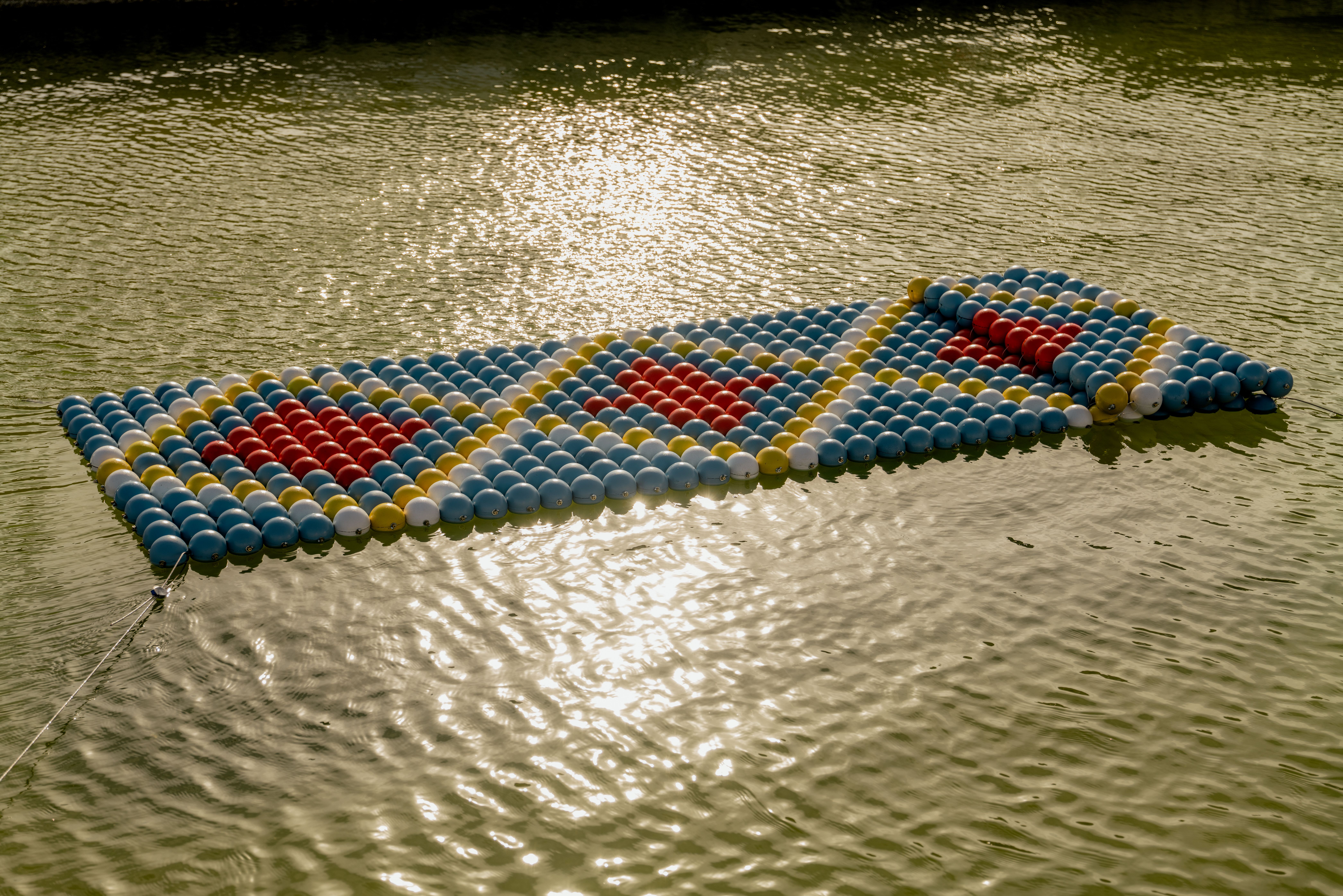
Sagmeister & Walsh, ‘Humpbacks’
With continued plans for public programming in Lisbon and beyond, as well as the launch of a complementary publication that captures all projects, to be launched in September 2024 in New York, the conversation on the use of cork in urban design is far from over.

Sagmeister & Walsh, ‘Cork Bottles’
Nana Ama Owusu-Ansah is a writer and photographer from London. She first wrote for Wallpaper* in 2021, in a series on the new vanguard of African designers practising in Africa and its diaspora. She is drawn to projects centring on decolonial approaches to art, architecture, as well as community and sustainability. Nana Ama read Economics and Spanish at University of St Andrews, and, as an avid linguist, is passionate about using accessible language to invite new audiences to engage in design discourse.
-
 Put these emerging artists on your radar
Put these emerging artists on your radarThis crop of six new talents is poised to shake up the art world. Get to know them now
By Tianna Williams
-
 Dining at Pyrá feels like a Mediterranean kiss on both cheeks
Dining at Pyrá feels like a Mediterranean kiss on both cheeksDesigned by House of Dré, this Lonsdale Road addition dishes up an enticing fusion of Greek and Spanish cooking
By Sofia de la Cruz
-
 Creased, crumpled: S/S 2025 menswear is about clothes that have ‘lived a life’
Creased, crumpled: S/S 2025 menswear is about clothes that have ‘lived a life’The S/S 2025 menswear collections see designers embrace the creased and the crumpled, conjuring a mood of laidback languor that ran through the season – captured here by photographer Steve Harnacke and stylist Nicola Neri for Wallpaper*
By Jack Moss
-
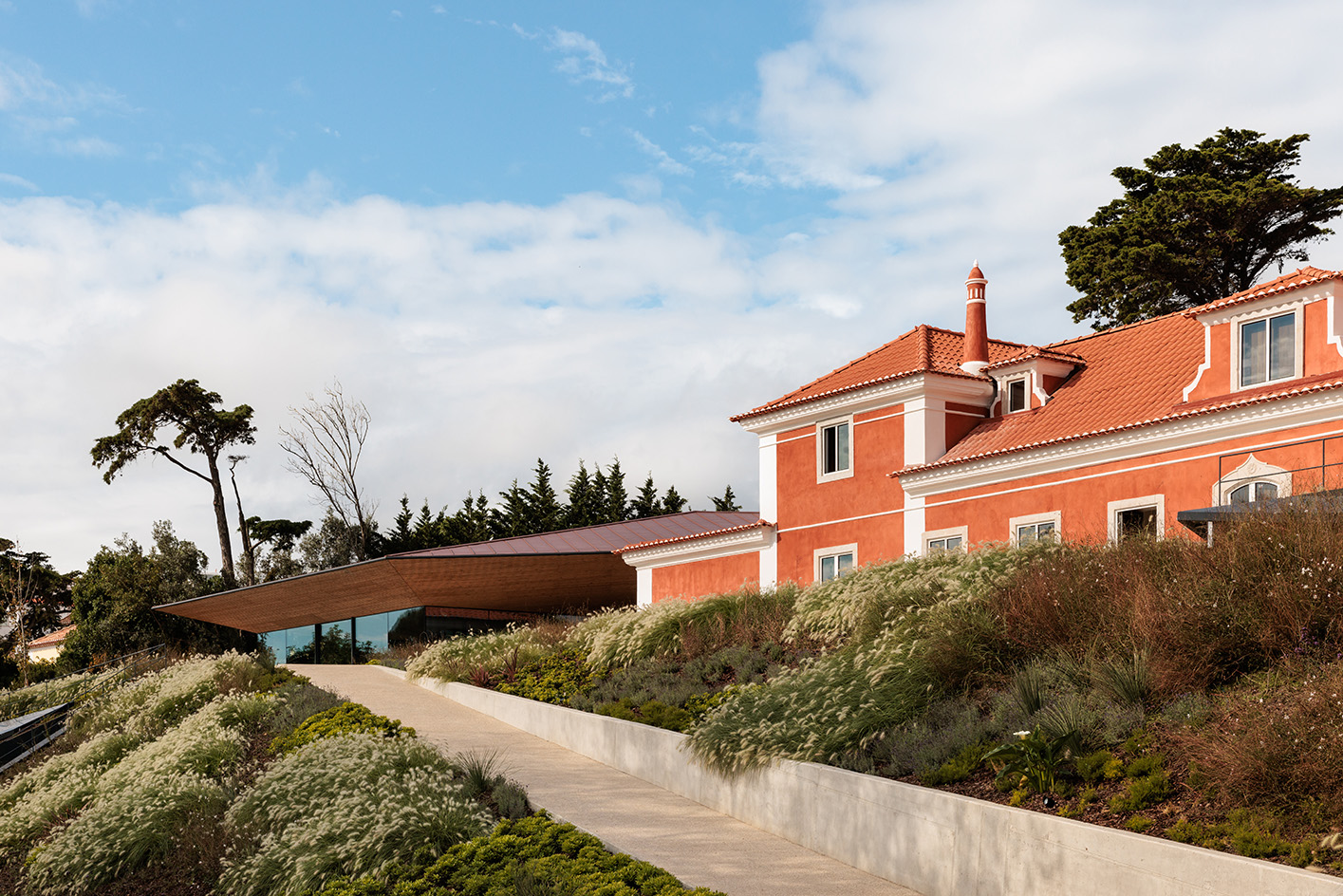 Tour the Albuquerque Foundation, Portugal’s new ceramics hub, where the historic and contemporary meet
Tour the Albuquerque Foundation, Portugal’s new ceramics hub, where the historic and contemporary meetA new cultural destination dedicated to ceramics, The Albuquerque Foundation by Bernardes Arquitetura opens its doors in Sintra, Portugal
By Ellie Stathaki
-
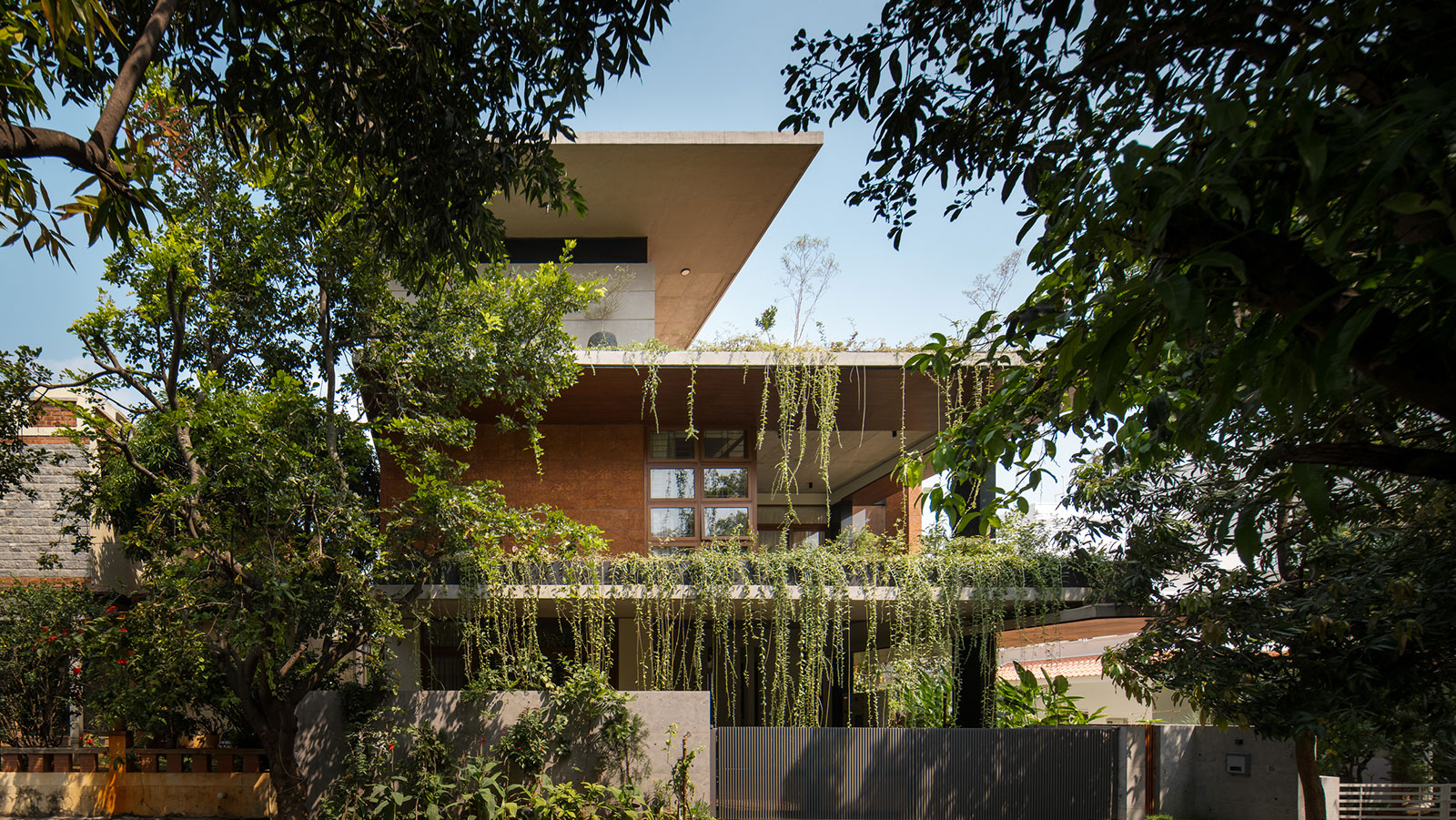 Year in review: the top 12 houses of 2024, picked by architecture director Ellie Stathaki
Year in review: the top 12 houses of 2024, picked by architecture director Ellie StathakiThe top 12 houses of 2024 comprise our finest and most read residential posts of the year, compiled by Wallpaper* architecture & environment director Ellie Stathaki
By Ellie Stathaki
-
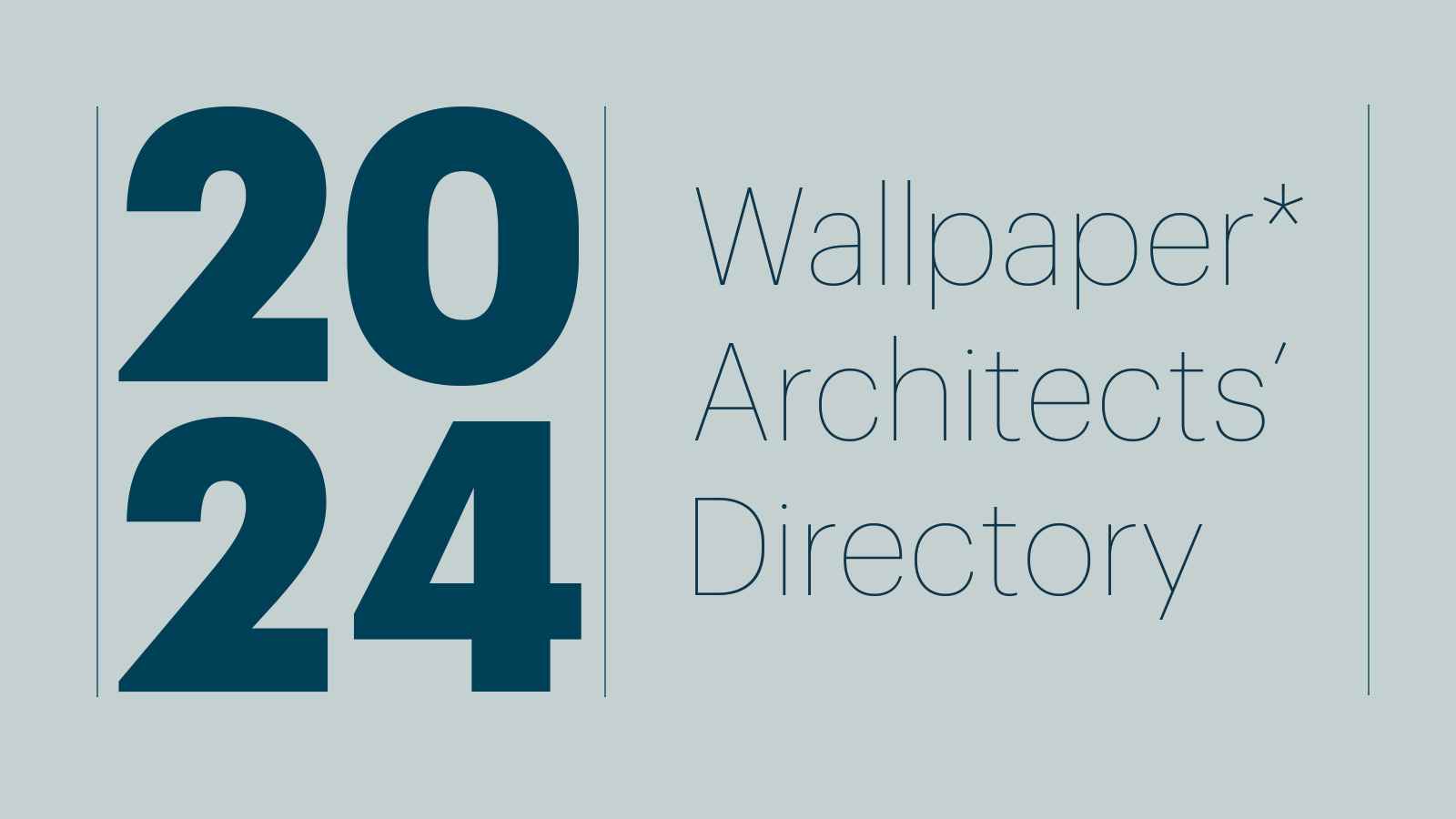 Wallpaper* Architects’ Directory 2024: meet the practices
Wallpaper* Architects’ Directory 2024: meet the practicesIn the Wallpaper* Architects Directory 2024, our latest guide to exciting, emerging practices from around the world, 20 young studios show off their projects and passion
By Ellie Stathaki
-
 Branco del Rio's House AA8 brings a pop of colour to its Portuguese neighbourhood
Branco del Rio's House AA8 brings a pop of colour to its Portuguese neighbourhoodBased in Portugal, Branco del Rio Arquitectos joins the Wallpaper* Architects’ Directory 2024, our annual round-up of exciting emerging architecture studios
By Tianna Williams
-
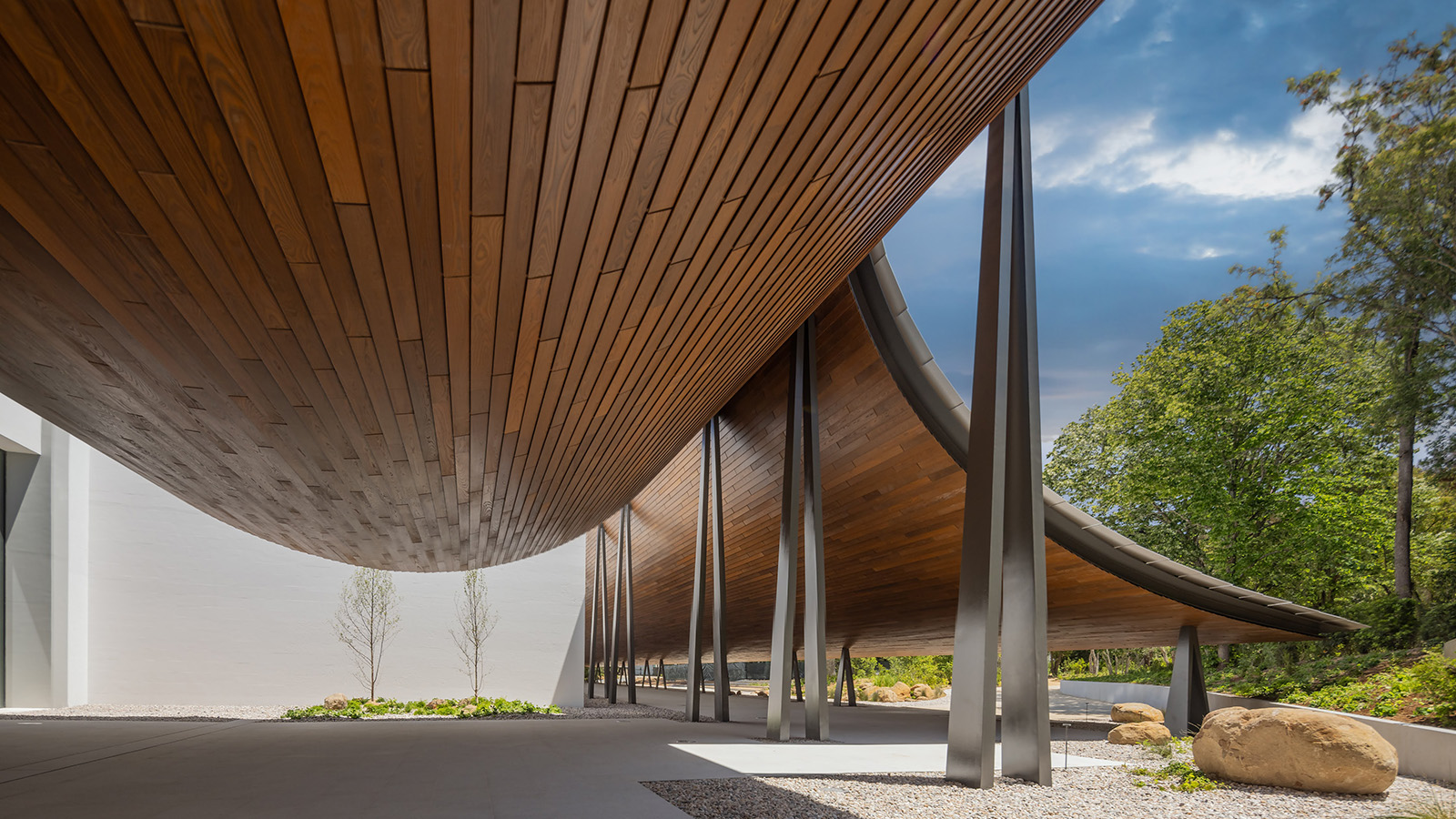 Gulbenkian Foundation's new art centre by Kengo Kuma is light and inviting
Gulbenkian Foundation's new art centre by Kengo Kuma is light and invitingLisbon's Gulbenkian Foundation reveals its redesign and new contemporary art museum, Centro de Arte Moderna (CAM), by Kengo Kuma with landscape architects VDLA
By Amah-Rose Mcknight Abrams
-
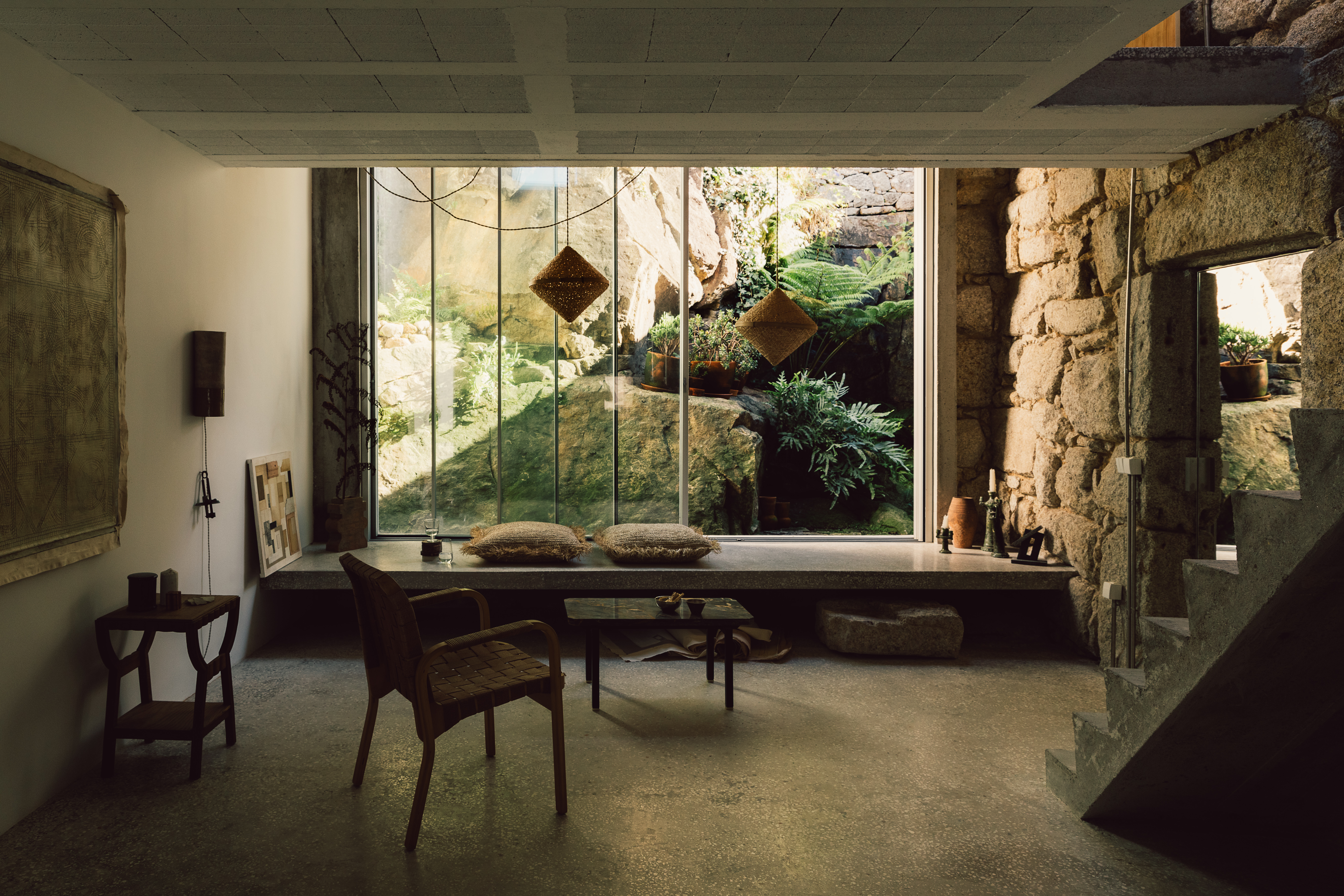 Casa e a Pedra is a Porto home emerging from a rocky context
Casa e a Pedra is a Porto home emerging from a rocky contextCasa e a Pedra by architect François Leite is an urban residential reinvention in Porto, Portugal
By Ellie Stathaki
-
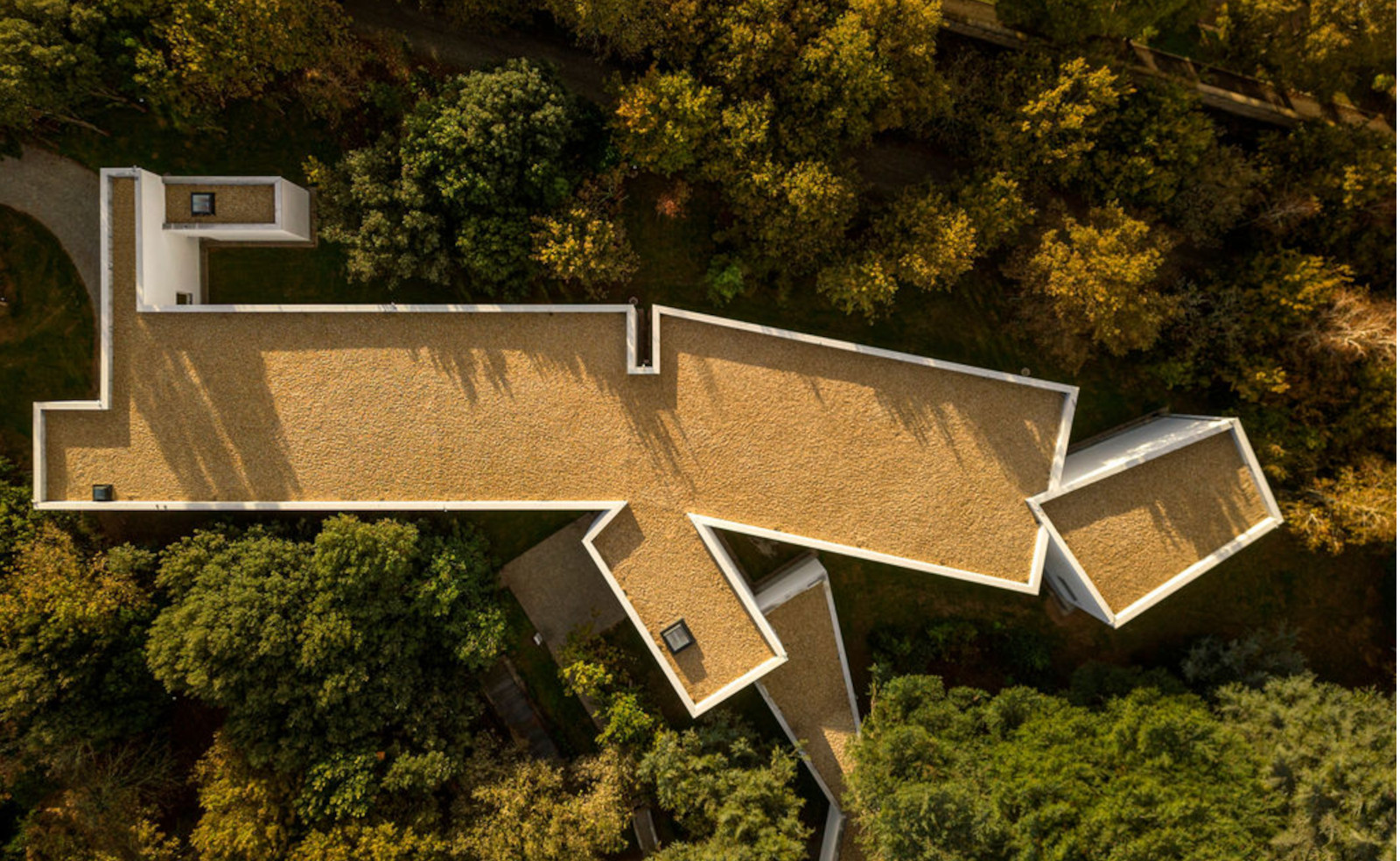 Álvaro Siza Wing expands archive and exhibition space in Porto’s Museu Serralves
Álvaro Siza Wing expands archive and exhibition space in Porto’s Museu SerralvesÁlvaro Siza returns to Serralves Museum of Contemporary Art in Porto, crafting his namesake new wing that just opened to the public
By Josh Fenton
-
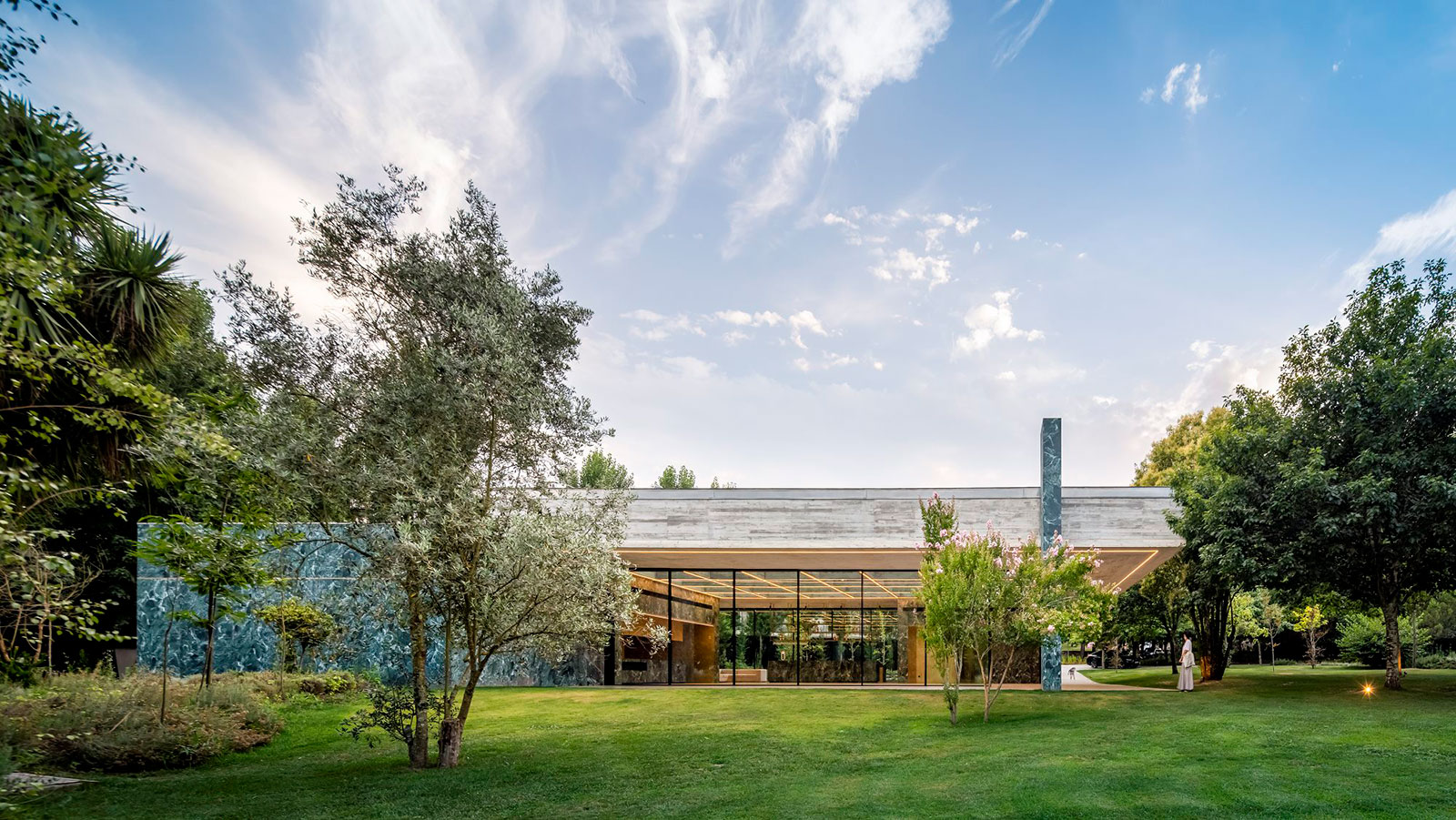 This Portuguese Pavilion in the Garden is a dramatic space for entertaining
This Portuguese Pavilion in the Garden is a dramatic space for entertainingPavilion in the Garden by Spaceworkers is an event space in Portugal, opening up to its leafy setting through dramatic, minimalist architecture
By Ellie Stathaki